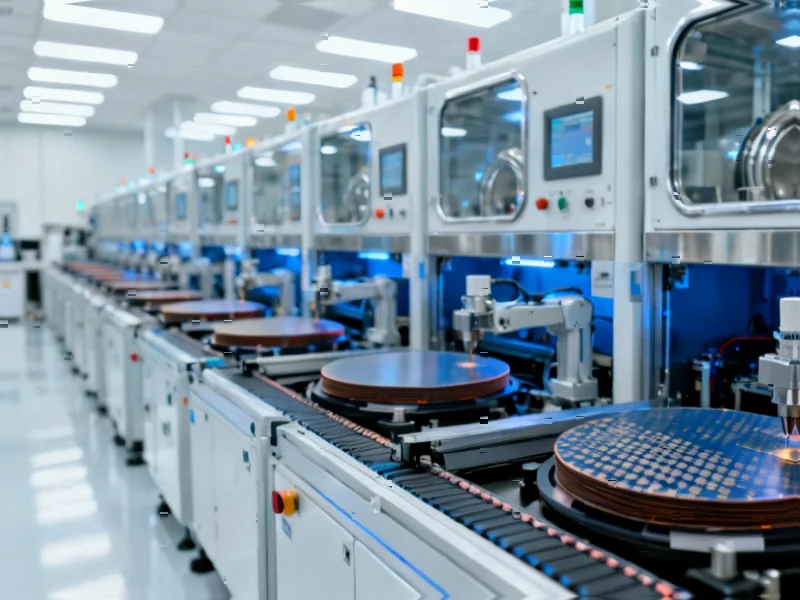According to engineerlive.com, a new IEEE global survey of technology leaders from Brazil, India, Japan, China, the UK and the US reveals that 77% of technologists believe humanoid robots will become commonplace coworkers within two years. The “Impact of Technology in 2026 and Beyond” study found 96% expect agentic AI adoption to accelerate dramatically in 2026, with these systems working independently but still requiring human verification. Some 91% predict increased use of agentic AI for data analysis, driving more hiring of data analysts to check accuracy and ensure transparency. About half of those surveyed believe 26-50% of global jobs will be augmented by AI software by 2026, while 49% think it will take five to seven years to build the data center infrastructure needed to meet AI demand growth.
The robot in the next cubicle
Here’s the thing about that 77% expecting humanoid coworkers – it’s not about replacing humans entirely. The survey specifically notes these robots would add “fun” to workplaces initially before becoming normalized. Basically, we’re talking about gradual integration rather than sudden replacement. And honestly, that timeline feels aggressive. Humanoid robots becoming commonplace coworkers by 2026? That’s just two years away. Most offices still struggle with reliable Wi-Fi and functioning printers.
But the underlying trend is real. Companies are pouring money into robotics and agentic AI systems that can work independently. The novelty factor might wear off quickly when your robot coworker keeps asking to borrow your charger or needs IT support every other day. Still, the psychological impact of working alongside humanoid machines could be significant – will people form emotional attachments? Will there be robot favoritism?
The agentic AI tidal wave
That 96% agreement on agentic AI acceleration is telling. Everyone sees this coming. Agentic AI represents the next evolution – systems that don’t just respond to prompts but can actually work through multi-step processes independently. Think of it as moving from having a smart assistant to having an autonomous employee.
But there’s a crucial caveat in the survey that often gets overlooked: this technology “still needs to be double-checked.” So we’re creating systems sophisticated enough to work independently… that still require human oversight. Doesn’t that sound familiar? It’s basically the same pattern we’ve seen with every major technology shift – the tools get more powerful, but the need for human judgment never really goes away.
Who wins and who adapts
The job augmentation numbers are fascinating. About half of tech leaders see 26-50% of jobs being augmented by AI in two years. That’s massive, but it’s augmentation, not replacement. The survey specifically calls out increased hiring of data analysts to verify AI outputs. So some roles might actually grow because of AI.
Look at the skills these leaders want: AI deployment, cybersecurity, robotics. The winners in this new landscape won’t necessarily be the AI experts themselves, but the people who can manage, verify, and secure AI systems. It’s creating entirely new categories of jobs while transforming existing ones. The banking, healthcare, and automotive industries are expected to see the biggest changes – all sectors where accuracy and reliability are non-negotiable.
The infrastructure challenge
Nearly half of respondents think it will take five to seven years to build the data center infrastructure needed for this AI explosion. That’s the reality check moment. We can dream about humanoid coworkers and autonomous AI agents, but the physical infrastructure to support this vision simply doesn’t exist yet.
Think about the power requirements alone. Current data centers are already straining under existing AI workloads. Building out the global infrastructure for widespread agentic AI adoption isn’t just about money – it’s about physical constraints, energy grids, and construction timelines. The technology might be ready before our ability to power and cool it. That disconnect between AI capability and infrastructure reality could be the biggest bottleneck nobody’s talking about.
So where does this leave us? The IEEE survey paints a picture of rapid transformation, but the timeline feels… optimistic. Humanoid coworkers by 2026? Maybe in highly controlled environments or specific industries. The agentic AI revolution is coming, but the infrastructure and verification systems needed to make it work reliably at scale will take longer than two years. The future is arriving – just probably not as quickly or as smoothly as these surveys suggest.




